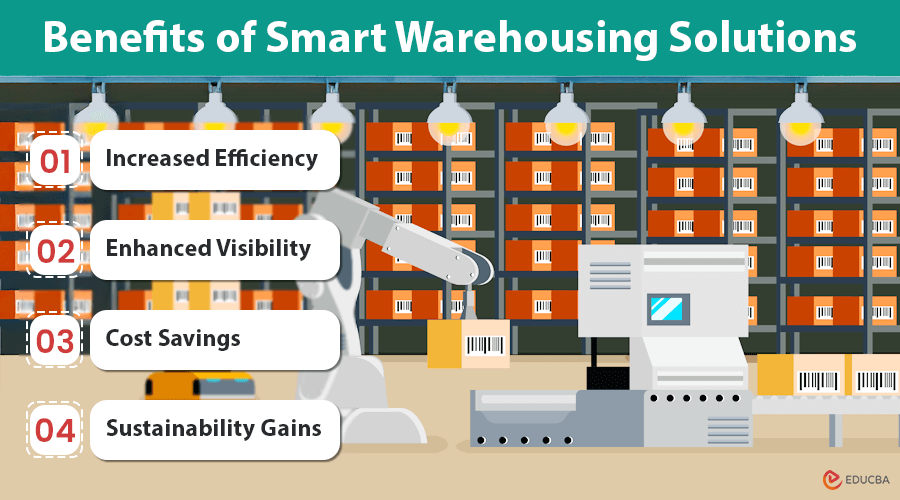How Smart Warehousing Solutions Support Global Supply Chain Management?
Global supply chains are growing more complicated as businesses deal with changing demand, varied markets, and unexpected challenges. In this fast-paced environment, smart warehousing solutions have become essential for streamlining supply chain operations. By leveraging advanced technologies like automation, IoT (Internet of Things), AI, and robotics, smart warehouses enhance storage efficiency, streamline inventory management, and improve the overall flow of goods in international markets.
This article looks at the main features, advantages, and challenges of smart warehousing solutions in global supply chain management, including real-life examples and future trends.
Insights from CIO Conferences: Driving Innovations in Smart Warehousing Solutions
CIO conferences are valuable platforms for discussing advancements in smart warehousing solutions. These events highlight strategies for integrating innovative technologies into global supply chains to maintain competitiveness.
Key Takeaways from CIO Conferences:
- IoT for Real-Time Visibility: IoT-enabled sensors track inventory and monitor environmental conditions in real-time.
- AI Integration: AI-driven analytics forecast demand and optimize warehouse operations.
- Scalable Automation: Robotic systems that adapt to varying workloads improve flexibility and efficiency.
Example: At a recent CIO conference, Alibaba’s logistics leaders shared insights on using automation and big data analytics to optimize their Cainiao network’s operations.
The Role of Smart Warehousing Solutions in E-Commerce Success
The rapid growth of e-commerce, driven by digital marketing in Los Angeles, has emphasized the need for smart warehousing solutions. These systems support increasing consumer demand while ensuring fast and accurate deliveries.
Benefits for E-Commerce Operations:
- Faster Fulfillment: Automated picking and packing systems process orders efficiently.
- Accurate Inventory Management: IoT sensors provide real-time stock updates, reducing errors.
- Seamless Integration: Smart systems integrate with e-commerce platforms for streamlined order processing.
Example: Amazon uses robotics and IoT to manage millions of daily orders, maintaining its competitive edge in global markets.
Key Features of Smart Warehousing Solutions
1. IoT Integration
IoT connects devices, inventory, and systems, enabling seamless communication and data sharing.
Applications:
- RFID tags for inventory tracking.
- Environmental control for product quality.
- Predictive maintenance for equipment reliability.
2. Robotics and Automation
Automation reduces manual labor, enhances speed, and minimizes errors.
Applications:
- Automated Guided Vehicles (AGVs) for transporting goods.
- Robotic arms for picking and packing tasks.
- Conveyor systems for efficient material handling.
3. Artificial Intelligence (AI)
AI enhances efficiency by analyzing data and predicting trends.
Applications:
- Demand forecasting based on historical sales.
- Route optimization for order picking.
- Process automation to reduce human errors.
China Sourcing Agents: Streamlining Global Supply Chains
China sourcing agents play an important role in global supply chains by connecting international businesses with Chinese manufacturers. With their local knowledge of markets, regulations, and supplier networks, these agents help businesses efficiently and cost-effectively source high-quality products.
Key Roles of a China Sourcing Agent:
- Finding and Verifying Suppliers: Sourcing agents identify trustworthy manufacturers, check their reliability, and ensure the products meet international standards.
- Negotiating and Reducing Costs: With their local expertise, agents negotiate better prices, delivery times, and payment terms, helping businesses improve their profit margins.
- Ensuring Quality: Agents oversee production, conduct inspections, and ensure products meet quality standards to avoid delays or returns.
- Coordinating Logistics: Sourcing agents manage customs clearance, organize shipping, and handle storage to ensure timely delivery of products.
Benefits of Smart Warehousing Solutions for Global Supply Chains
1. Increased Efficiency: Automation accelerates picking, packing, and shipping processes.
2. Enhanced Visibility: IoT provides real-time updates, improving decision-making and customer satisfaction.
3. Cost Savings: Optimized operations reduce labor costs, waste, and inefficiencies.
4. Sustainability Gains: Energy-efficient systems and waste reduction contribute to eco-friendly operations.
Challenges in Implementing Smart Warehousing Solutions
| Challenge | Solution |
| High Initial Costs | Start with pilot projects and scale gradually to demonstrate ROI. |
| Integration Complexities | Collaborate with experienced vendors to ensure smooth integration with existing systems. |
| Workforce Transition | Offer reskilling programs to prepare employees for technology-driven roles. |
| Data Security Risks | Implement robust cybersecurity measures, including encryption and regular audits. |
Real-World Success Stories
- Amazon Fulfillment Centers: Amazon leverages robotics, AI, and IoT to efficiently process millions of orders daily.
- Alibaba’s Cainiao Network: Alibaba integrates automation and big data analytics, enabling same-day delivery across China.
- Walmart’s Automated Warehouses: Walmart employs AI and robotics to improve inventory management and reduce delivery times globally.
The Future of Smart Warehousing Solutions
- Fully Autonomous Warehouses: Future facilities will rely entirely on robotics and AI, minimizing human intervention.
- Blockchain Integration: Blockchain will enhance transparency and security in supply chain operations.
- Sustainability Innovations: Energy-efficient robotics and eco-friendly practices will become standard.
- Hyper-Personalization: AI will tailor operations to specific markets or customer preferences.
Final Thoughts
Smart warehousing solutions are revolutionizing global supply chain management through advanced technologies like IoT, robotics, and AI. These innovations enhance efficiency, reduce costs, and deliver superior customer experiences, helping businesses stay competitive internationally.
While challenges such as high implementation costs and integration complexities exist, strategic planning and continuous innovation can unlock the full potential of smart warehousing. Companies that adopt these solutions are better equipped to manage the challenges of global supply chains and grow sustainably.
Recommended Articles
We hope this guide helped you understand the impact of smart warehousing solutions on global supply chains. Check out these recommended articles for more insights on optimizing logistics, automation, and supply chain management.


